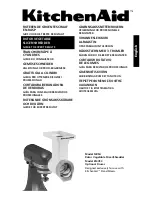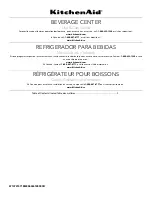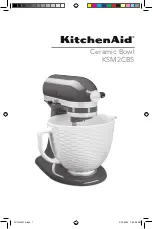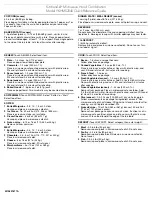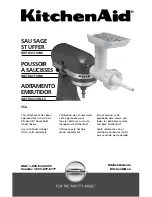
18
English
English
Remarks on recipes
1. Ingredients
– Since each ingredient plays a specific role for the successful baking of the bread,
the correct measuring is just as important as the order in which the ingredients
are added.
– The most important ingredients such as the liquid flour, salt, sugar and yeast
(either dry or fresh yeast can be used) influence the successful outcome of the
preparation of the dough and the bread. Always use the right quantities in the
right proportions.
– Use lukewarm ingredients if the dough needs to be prepared immediately.
If you wish to set the program phase timing function, it is advisable to use cold
ingredients to avoid the yeast to start rising too soon.
– Margarine, butter and milk have an influence on the flavor of the bread.
– Sugar can be reduced by 20% to make the crust lighter and thinner without
affecting the successful outcome of the baking. You can replace sugar with
honey if you want the crust to be softer and lighter.
– Gluten which is produced in the flour during the kneading provides the structure
of the bread. The ideal flour mixture is composed of 40% wholemeal flour and
60% of white flour.
– If you wish to add cereals grains, leave them to soak overnight. Reduce the
quantity of flour and liquid (up to 1/5 less).
– You can add wheat bran to the dough if you want the bread to be lighter and
richer in roughage. Add one tablespoon of bran for 500 g of flour and increase
the amount of liquid by ½ tablespoon.
– Wheat gluten is a natural additive obtained from wheat proteins. It makes the
bread lighter, the bread also has more volume. The bread falls more rarely and
is easier to digest. The effect can be easily appreciated when baking whole meal
and other bakery products made of home-milled flour.
– Pure lecithin powder is a natural emulsifier which improves the bread volume,
makes the soft part softer and lighter. The bread retains its freshness for longer.
2. Adjusting the amount of the ingredients
If the doses need to be increased or reduced, make sure that the proportions of the
original recipe are maintained.
3. Adding and measuring the ingredients and quantities
– Always add the liquid first. Add yeast at the end. Do not allow the yeast to come
into contact with liquid to avoid fast rising of the yeast (especially when using
the timing function).
– When measuring ingredients, always use exact measurements, i.e. measure
ingredients using the measuring spoon provided with the unit or spoons used
at home, if according to recipes measurements should be made in tablespoons
or teaspoons.
– Measure the ingredients given in grams correctly.
– To measure liquid ingredients (in dl), use the provided measuring cup.
Содержание BM-2S
Страница 2: ......
Страница 20: ...Norsk Norsk 20 Norsk Norsk...
Страница 38: ...Svenska 20 Svenska...
Страница 56: ...Dansk 20 Dansk...
Страница 74: ...Suomi 20 Suomi...
Страница 92: ...20 English...
Страница 94: ......
Страница 95: ......
Страница 96: ...AS WILFA Industriveien 25 1481 Hagan Norway wilfa com...





























